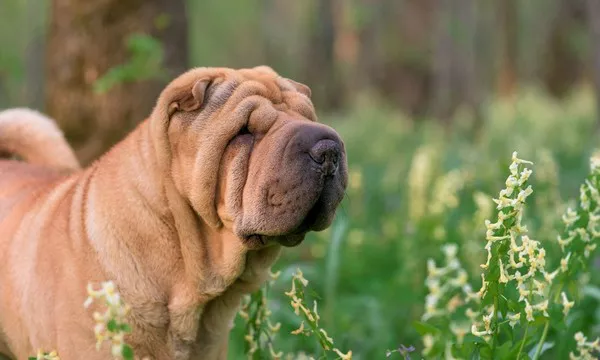The Shar Pei is a distinctive breed known for its wrinkled skin and ancient lineage. Originating from China, this breed has a rich history intertwined with cultural significance and unique characteristics. This article delves into the origins of the Shar Pei, exploring its Chinese roots, historical context, and evolution as a beloved companion around the world.
Understanding the Shar Pei
Before exploring its origins, it’s essential to understand the Shar Pei breed itself. Known for its loose, wrinkled skin and “hippopotamus” muzzle shape, the Shar Pei is easily recognizable. It belongs to the Non-Sporting group in the American Kennel Club (AKC) and has gained popularity for its loyalty, protective nature, and distinctive appearance.
Physical Characteristics
The Shar Pei’s most prominent feature is its wrinkled skin, which is more pronounced in puppies and tends to smooth out as they mature. Their coat can be short (horse coat) or slightly longer (brush coat), with a wide range of colors. The breed’s unique head shape and deep-set eyes contribute to its distinctive look.
Temperament and Behavior
Shar Peis are known for their loyalty and devotion to their families. They can be reserved with strangers but are affectionate and playful with their loved ones. Historically bred as guard dogs, they possess a strong protective instinct and can be aloof towards unfamiliar people or animals.
Historical Roots: The Shar Pei’s Origins in China
The Shar Pei’s history can be traced back to ancient China, where it was primarily used for hunting, herding, and guarding purposes. Its name, “Shar Pei,” translates to “sand skin,” referring to the breed’s distinctive rough coat texture.
Ancient Origins
Evidence suggests that the Shar Pei’s ancestors date back more than 2,000 years, making them one of the oldest dog breeds known to exist. They were originally bred in the southern provinces of China, particularly in the Guangdong province, where they served as versatile working dogs.
See Also: Is a Shar Pei a Family Dog?
Role in Chinese Culture
In Chinese culture, the Shar Pei held a significant role beyond practical purposes. They were considered symbols of loyalty, intelligence, and protection. Artifacts and historical documents depict dogs resembling the Shar Pei, indicating their presence and importance in ancient Chinese society.
Evolution and Decline
Despite their ancient origins, the Shar Pei faced a decline in numbers during the mid-20th century. Various factors, including political upheavals in China and changes in cultural preferences, contributed to their near-extinction. By the 1970s, the breed was considered rare, with only a few individuals remaining in their homeland.
Resurgence and Global Recognition
The Shar Pei’s fortunes changed dramatically in the 1970s when a concerted effort was made to save the breed from extinction. Dog enthusiasts and breeders, both in China and abroad, worked diligently to preserve and promote the Shar Pei’s unique characteristics.
Introduction to the West
The breed gained international attention when a few Shar Peis were exported to the United States and other Western countries in the 1970s. Their distinctive appearance and loyal temperament captured the interest of dog enthusiasts and led to efforts to establish them as a recognized breed outside of China.
Recognition by Kennel Clubs
In 1992, the American Kennel Club (AKC) officially recognized the Shar Pei as a breed, further solidifying its status and popularity in the United States and beyond. Today, the Shar Pei enjoys recognition by major kennel clubs worldwide, each emphasizing the breed’s unique heritage and characteristics.
Modern-Day Shar Pei: Characteristics and Care
Today, the Shar Pei remains a beloved companion known for its loyalty, intelligence, and distinctive appearance. Understanding their origins and unique traits can help prospective owners provide the best care and environment for these remarkable dogs.
Health Considerations
Like all breeds, the Shar Pei is prone to certain health conditions, including skin issues due to its wrinkled skin. Regular grooming and veterinary care are essential to maintain their health and well-being.
Training and Socialization
Early socialization and positive reinforcement training are crucial for Shar Peis, given their protective nature. They respond well to consistent, gentle training methods and thrive in environments where their intelligence and loyalty are appreciated.
Conclusion
The Shar Pei’s journey from ancient China to global recognition is a testament to its resilience and unique characteristics. As a breed with deep-rooted cultural significance and a distinctive appearance, the Shar Pei continues to captivate dog enthusiasts around the world. By understanding its origins and historical context, we gain a deeper appreciation for this loyal and beloved companion. Whether as a guardian, family pet, or show dog, the Shar Pei’s legacy as a symbol of loyalty and protection remains steadfast in the hearts of its admirers worldwide.
Related Topics:


























